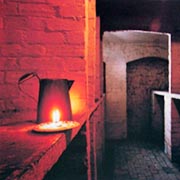The Old Market
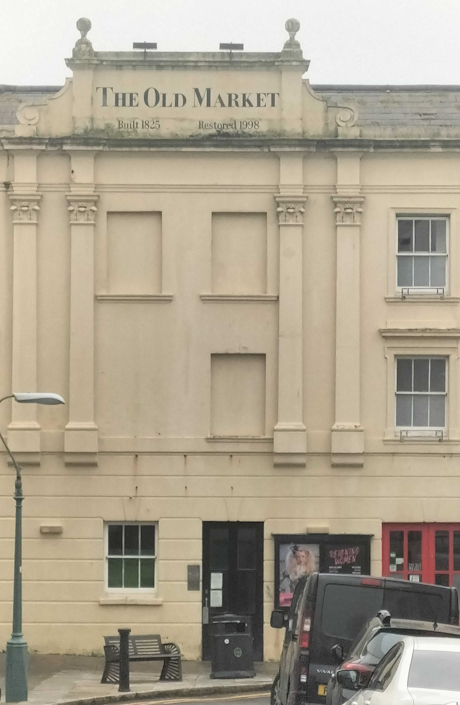
The Old Market in 2024
Brunswick Town was planned as a self-sufficient new town, and it was Scutt and Busby’s intention not to make this project dependent on Brighton. The new town was in the country to the west of Brighton, and a long distance from the then existing village of Hove, centred around the old St Andrews Church, and Hove Street (now Sackville Road). An integral part of the plan was a large market building which was to be placed between Upper and Lower Market Streets, and to be entered by an archway from Waterloo Street. Although this building is not directly facing onto Waterloo Street, it’s postal address has always been 21½ Waterloo Street. Shops were not to be permitted in the planned new town and Brunswick Market would provide the provisions needed by the residents in the grander parts of Brunswick Square and Terrace as well as the coachmen, traders and servants living in the humbler streets of the new development.
This history is about the Brunswick Market building, its time as a market, its long history as a riding school, the tragic death of its most famous owner, as a wholesale grocers over 30 years in the 20th Century and its present life as an Arts Centre.
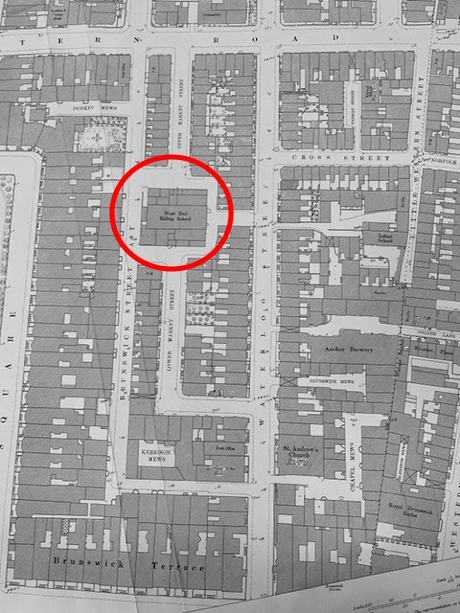
Extract from the 1875 OS Map showing location of market/riding school
The four plans for the Brunswick Market, designed by Busby himself, date from 1823 and are in the possession of the Royal Institution of British Architects (RIBA).
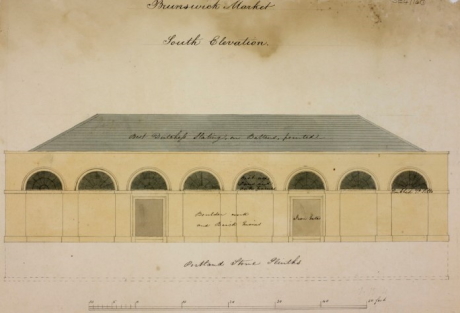
C.A. Busby’s original design for the Brunswick Market courtesy of ribapix.com
Note that this was a first design for the Brunswick Market. The executed market building, finished in 1828, is much grander.
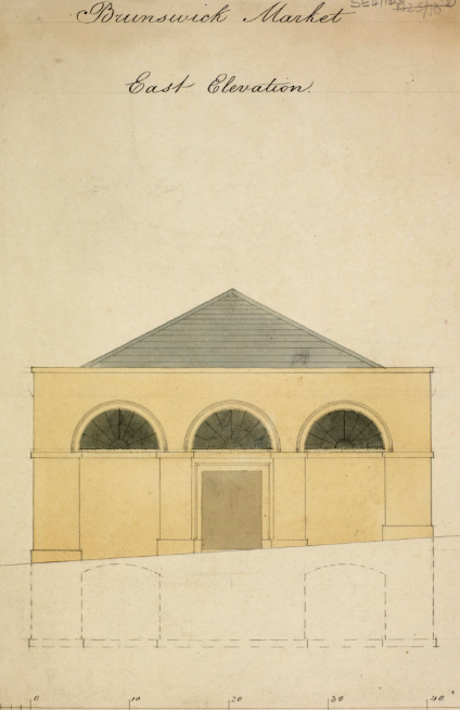
C.A. Busby’s original design for the Brunswick Market courtesy of ribapix.com
The market was wholly owned by Thomas Scutt, the owner of the land on which Brunswick Town was built. The market opened on 28 August 1828 but was never successful. It is suggested that a downturn in the economy may have been the cause of the failure but another more plausible explanation for the closure would be the Brighton Commissioners’ decision to modernise their market in the 1830s meaning that much of the market business remained in the old town, rather than moving to Brunswick. Scutt was still a Brunswick Commissioner in 1839 but may not have wanted his financial difficulties with the failure of the market to be public knowledge.
Its life as a market was a short one only remaining open until 1839. By then, shops were already being opened at the northern end of Waterloo Street and along the expanding Western Road. Western Road was growing in importance as the major shopping area. A part of the market was used as a school for the poorer children of Hove before the Farman Street National School was opened nearby in 1840. The minutes of the Brunswick Commissioners make little mention of the affairs of the market.
So, what became of the building after the Brunswick Market closed?
The first mention of the Roberts Riding Academy is in the 1848 Folthorps Directory where it is placed between numbers 11 and 14. This would seem just to be a mistake as the numbering for the lower western side of Waterloo Street would have been the same as now, by this date. In the 1852 Folthorps, it is placed between numbers 21 and 22.
The 1856 Folthorps Directory lists the West End Riding school at 21½ (for the first time) and the name of C.Poole as shown below.
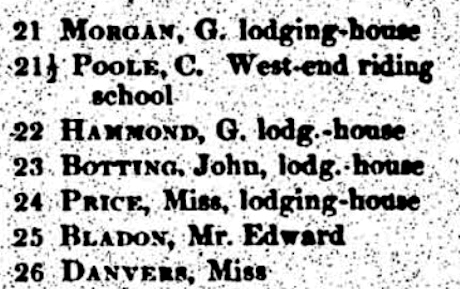
Extract from the 1856 Folthorps Directory
The 1859 Directory lists C. Poole as ‘Riding Master and Riding School ‘ at 21½, and C.Poole living at number 22. Unfortunately, his details cannot be found at all in the 1861 census although one would imagine he is living locally. Charles Poole is recorded in the 1851 census, living in Keymer aged 39, unmarried and working as a ‘General dealer in cattle’. Poole was the ‘Riding Master’ at the school, but Frank Carter was the proprietor from 1859.
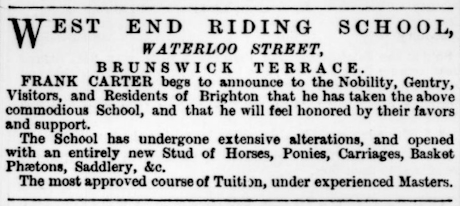
Brighton Gazette, Thursday 18 August 1859
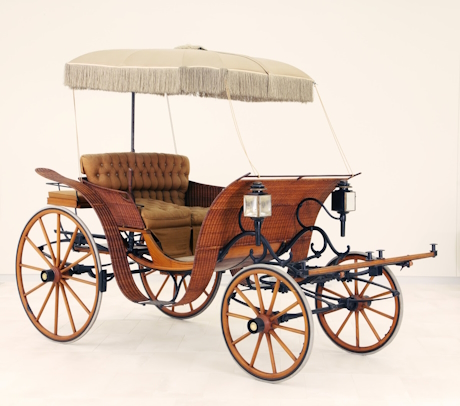
A Basket Phaeton
A distinction needs to be drawn between the owner/proprietor of the school (Frank Carter from 1859, W. H Walker from 1867), and the ’ Riding Master’, who appears to be Charles Poole through to when Dupont takes over the school in 1875.
The 1871 census has Charles Pool (no ‘e’) listed at the West End Riding School, a ’ Riding Master’,aged 52, unmarried, born in Falmer. However, the 1871 Pages Directory lists John Parker as the Riding Master at the school, he was aged 25 and lived at 7 Upper Market Street.
The contradictions in the Census and Street Directory information are a good example of the difficulties in establishing a definitive record from the sources we use. What we do know is that Charles Poole dies in January 1875 as his death is recorded in this extract from the Hastings and St Leonards Observer
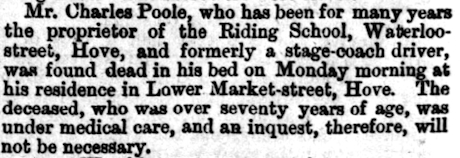
Hastings and St Leonards Observer 16 January 1875
Alfred Dupont
Alfred Dupont takes over the Riding Academy in 1875, and it begins to be much better known and more prestigious. The first advert after Dupont takes over is from the 1878 Pages Directory and is full of information and considerable evidence of what we would now call ‘re-branding’. This advert is in sharp contrast with the discreet notice Frank Carter had placed a few years before. Here it is called the West Brighton Riding Academy and features a number of selling points: ”largest riding school”, “commodious new dressing rooms”, “illuminated at dusk “, not to mention the daily “leaping practice”. This is an interesting example of the power of advertising, a new concept in Victorian Britain. At this time, there were over 30 lodging houses in Waterloo Street alone and the advert may well have appealed to some of those visitors.
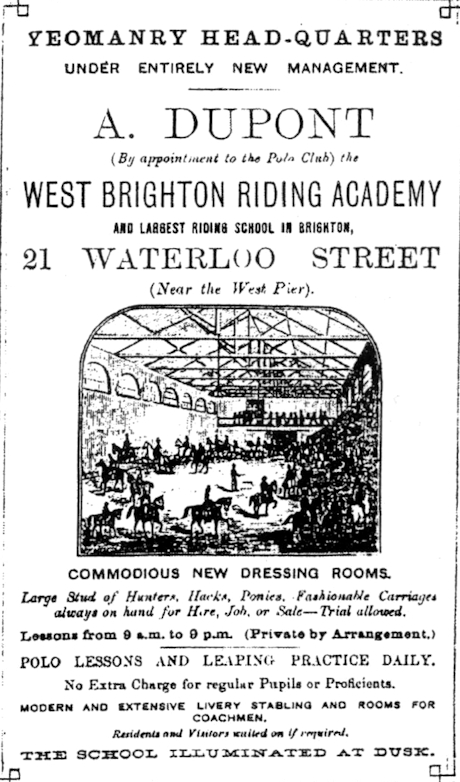
Pages Directory 1878
Dupont begins to make changes soon after he takes over as illustrated by his letter to the Brunswick Commissioners in 1878 announcing his intention to cover the entrance with a corrugated iron roof’.
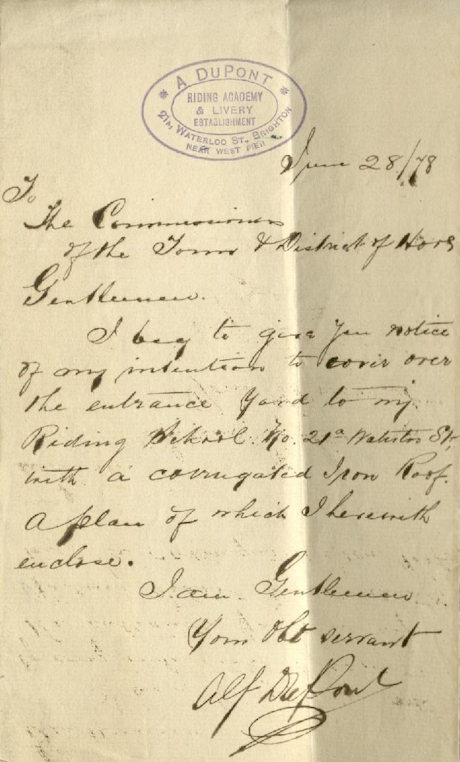
A few years later we have this superb flyer from 1881 for Dupont’s Military Riding Academy. This builds on the previous advert, adding the Military connections which would have been relevant with the British Empire at its height. The variety of tuition possible and the variety of horses available reinforces the success of the venture, now entered “under the New Arch”. It also underlines the importance of the horse in all aspects of mid-Victorian life. There were a number of other Livery stables and saddlers in the Brunswick area when Dupont was in charge at the Riding School, all evidence of the ubiquity of the horse at the time.
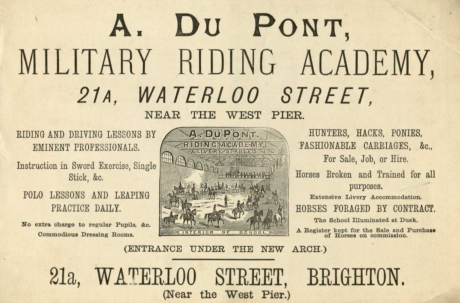
Alfred Dupont was originally from Suffolk and he returned to his home near Sudbury for several months each year. The Duponts were related, by marriage, to the famous artist, Thomas Gainsborough, arguably one of the most celebrated portrait and landscape artists of the eighteenth century. Gainsborough’s sister, Sarah, married Philip Dupont of Sudbury. Their son, conveniently known as Gainsborough Dupont, became his uncle’s assistant and was a well-known landscape artist in his own right. There were two original Gainsboroughs in the hall of the family home at 33 Denmark Villas.
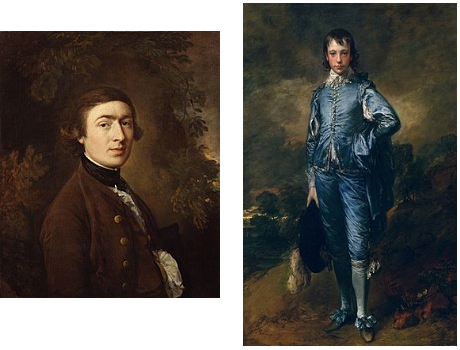
Thomas Gainsborough (left), and his most famous painting The Blue Boy (right)
A newspaper article about Dupont’s Riding School appeared in the Tunbridge Wells Advertiser on the14th December 1888 describing the building in gushing tones:
Originally one-storey (Dupont) has practically rebuilt the whole of the place with the exception of the riding school, sections being added at different times until the building now reaches three storeys of horses and one of saddle rooms, riding masters’ rooms and store rooms … Riding and driving lessons are given, and there are special classes for children … Kindness is a quality which seems to be practised at every step in dealing with our four-footed friend in Mr Dupont’s premises.
It is easy to see that Dupont, as he walks between the lines of his horses and ponies - and many of them knowing his voice turn round to be caressed – has made the comfort of the horse a science. Not a stray straw litters the pathway, the hay smells as sweet as in the fields, the best of forage that can be obtained is on hand; and every stall is clean and sweet.
This article coincides with some major building work which Dupont instigated in 1886. Dupont submitted his plans for Alterations and Additions to the West Brighton Riding Academy in the February of that year. Hove Borough Council was created in 1875 and this is where Dupont submitted two of his plans.
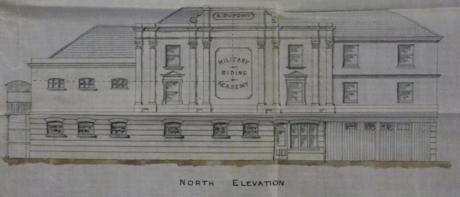
Keep Reference DO /C/6/81
The adverts in the Directories were also constantly updated. In 1884, “the electric light, instead of gas”, is mentioned indicating a modern, innovative, thriving business.
Alred Dupont lived at 33 Denmark Villas in Hove, the 1881 census says that he was 42 and his wife Ann was 38. They had three daughters: Emily, Charlotte and Anne. Presumably their son, Herman, must have been away at school when the census was taken. Their household was completed by a Sudbury born cook, Mary Eadie, and a German born servant, Anna Fischer`. They were clearly highly respected in the town as on the occasion of their silver wedding in May 1888 they were presented with illuminated addresses by the chairman of the Hove Commissioners and the Mayor Of Brighton, and presented with gifts from the local Masonic Lodge.
Dupont was also a councillor for the Brunswick Ward in Hove.
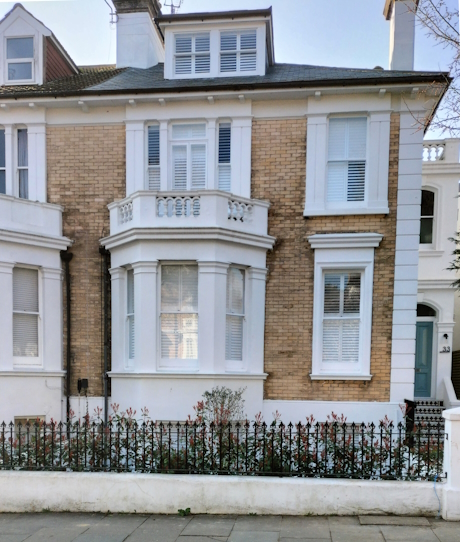
33 Denmark Villas, March 2024, taken by Chris Nichols
Death of Alfred Dupont
Alfred Dupont was killed in a tragic riding accident on Wednesday 2 July 1890. He was killed after his horse bolted without him being fully seated on the animal in front of his house. He fell from the horse in Albany Villas hitting his head on the pavement, his horse also kicking him. “Death was due to concussion of the brain and fracture at the base of the skull”. A verdict of accidental death was recorded and he was buried at Great Cornard, near Sudbury on the following Tuesday (on what would have been his 52nd birthday). The Southern Weekly News reported, “so numerous were these floral offerings that some of them had to be placed in a separate carriage”. The Sussex Daily News said he was one of the most prominent and most highly respected of local public men. He had been a Brunswick Commissioner and belonged to the Brighton Detachment of the Middlesex Yeomanry. It was said that his engaging manner and personal magnetism won him many friends.
His wife, Ann, died the following year in the family house in Great Cornard.
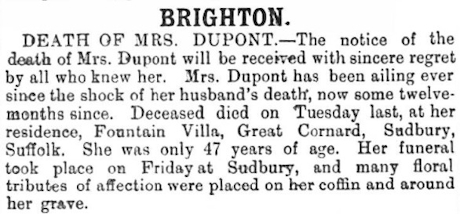
Sussex Agricultural Express 1 September 1891
The death notice in the Sussex Express records that “…(she) has been ailing ever since the shock of her husband’s death, now some twelve-months since”.
The business was sold the following year as a joint stock company under the name of Dupont Limited. It was to carry the Dupont name right through to the end of its life as a Riding School in the 1920s. The legacy of the name is surely testament to the importance of the prestigious company built by Alfred Dupont.
The legacy of the Dupont business was unexpectedly (and literally) revealed when re-painting of the Waterloo Street Archway was taking place in 2017.
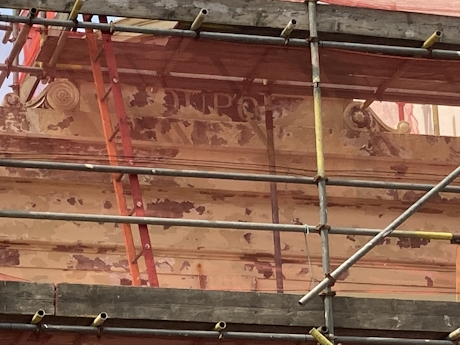
Photograph reproduced with the kind permission of Annie Drynan.
The following advert shows the Dupont Riding Academy continuing to thrive in the 1890s. It is interesting to note some changes in this 1899 poster from the Towners Directory (Dupont Ltd…the registered name, the telephone number…2508), but in particular the offer of “Wedding Carriages” and “Superior Four Horse Coaches “

We have two excellent sources about the tenure of T. P Allen as the Proprietor of the Riding School. The poster is from 1910, and it is interesting to compare with the 1881 flyer. The tone is much less militaristic reflecting the fact that the age of Empire was passing and that the car is beginning to take over from the horse. Riding is now going to be more for fun with, ”special attention paid to the tuition of children” and “ladies and gentlemen instructed in the Art of Riding “. It is no longer the necessity for the middle classes which it had been. Allen, as well as being the Dupont proprietor, also owned a business in Norfolk Mews.
The other superb source is an article called “Equestrianism in Brighton” which appeared in ‘The Brighton Season’ edition for 1911/1912. The Brighton Season was a yearly publication, describing itself as “the ‘magazine deluxe’ for Brighton boudoirs and Drawing Rooms”, so we should be under no illusion what their target demographic was, to use a much more modern term!
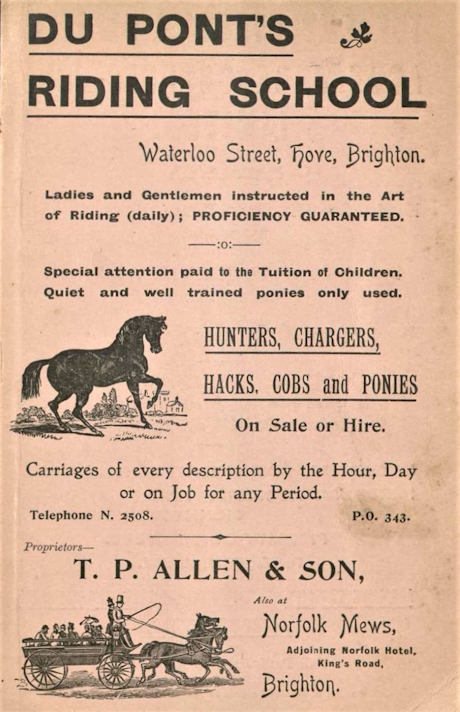
Keep Reference AMS 6432 6 16
An extract from the article praises Allen:
“Mr T. P. Allen, whose riding school in Waterloo Street, possesses a world-wide reputation, and who for many years has associated himself with all matters appertaining to the arts of riding and driving in Brighton, and whose name is said to be one of the most successful instructors in the town…
Mr Sidney Allen now manages the large business for his father, whose health has not been sufficiently strong to bear the whole burden of it. He also teaches personally.
The enormous stud of horses, owned by Mr Allen, comprises some very beautiful animals, hunters, hacks and carriage horses of the best ….”. The photograph below is entitled, a rare picture of the inside of the building.”
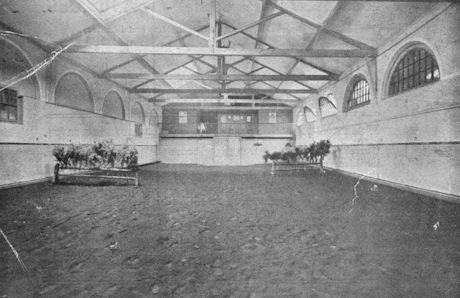
Allen’s Riding School and Ladies Gallery from the Brighton Season 1911/12
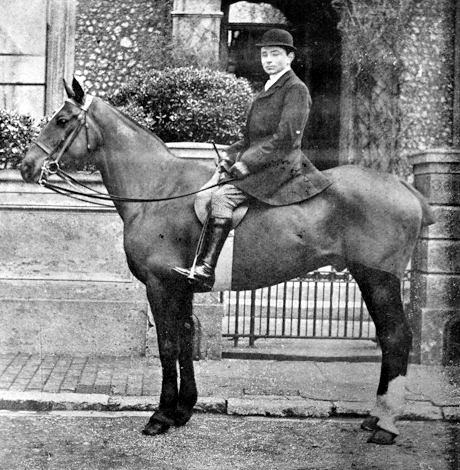
Sidney Allen from The Brighton Season, 1911/12. Keep Reference ACC4265/1/4/30
But change is on the way. Cars were replacing horses, at least for people who could afford them. This advert for “A Sensational car at a Sensational Price”, could be bought in a garage in Waterloo Street, is advertised in The Brighton Season just a couple of years later!
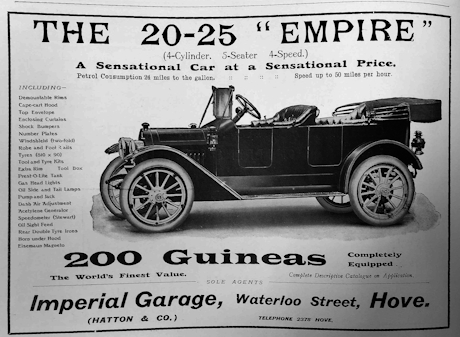
The Brighton Season 1913/14 (Keep reference BTNRP_BH422170)
The Riding school stayed open, at least according to the Directories, until 1929. One can imagine that there is a declining demand for the attractions of the school, unfortunately there are no financial records available for this period. The Directories up to 1916 indicate that T.P Allen was still the Proprietor, after that it is known as either the Dupont Riding School or Dupont’s Livery Stables. The only clue we have to any change is the name of the proprietor changing to A. J. Wright in 1928.
Wholesale Grocers
In 1931 the building is listed in the Kelly’s Directory as Stewart Ltd, Wholesale grocers, for the first time. Plans for some very extensive changes were submitted to Hove Council in 1929 for “refitting for a provision merchants’ business”, and in 1930, ”conversion of premises into provision store”.
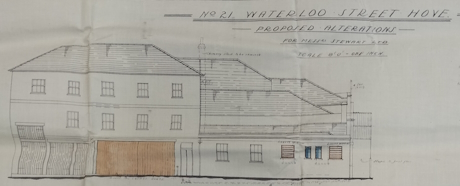
The 1930 Proposed Alterations
Keep Reference DO/C/6/7363
Arguably more interesting is the detail which is found on the ground floor plan. There were areas for different products including Soaps/Household, Tea and Coffee, Jam and Pickle, Butter and Cheese and Bacon Hanging amidst others. Further plans were submitted in the following years for the ‘formation of an unloading dock’ and for a motor van store.
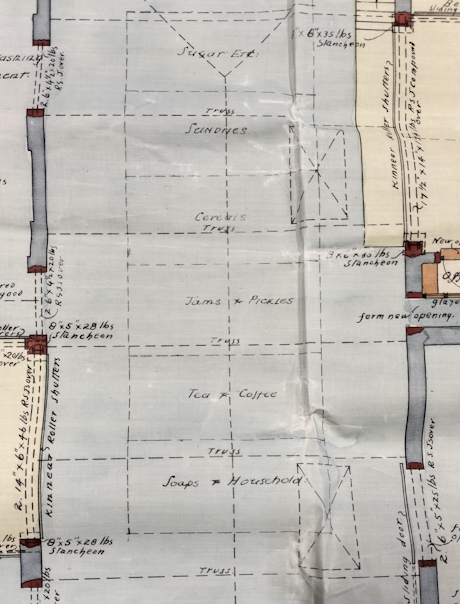
1929 Proposed Alterations. Keep Reference DO/C/6/7220
Although the Stewarts Wholesale business was there throughout the 1930’s, it did share the building with some other businesses. An antique dealers called “The Antiquary” is mentioned in the 1932 and 1936 Directories and R. C Edwards, Sports Good Dealer. Is shown on a 1936 plan, and is mentioned in 1937 and 1938.
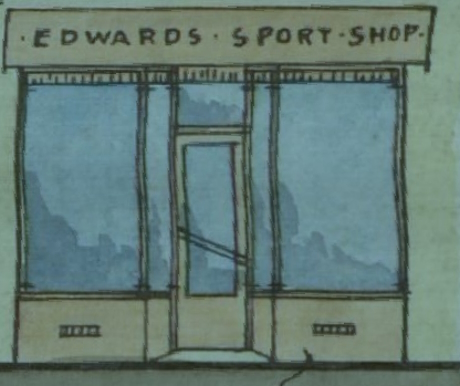
Edwards Sport Shop in the northwest corner of the building
The following photograph shows more changes to the Arch in Waterloo Street! The last mention of Stewarts Ltd, Wholesale Grocers, is in the 1947 Directory.
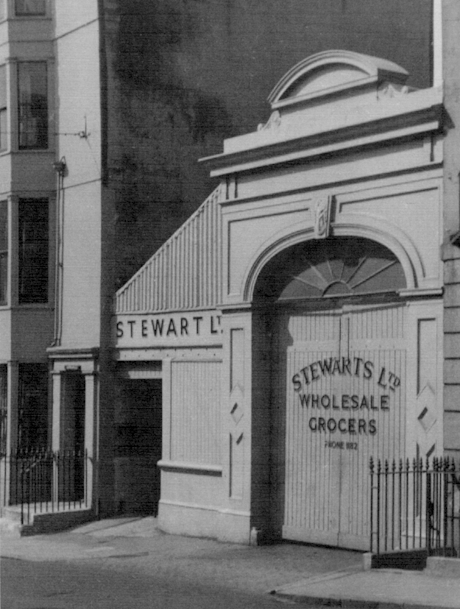
Possibly taken in 1946. Keep Reference ACC13359/2/4/16.
By the 1970s the building belonged to the Sussex Mutual Building Society and on 10 September 1971 it was given Grade II listed status. The fate of the building reflects the changing fortunes and decline of the Brunswick area. Many of the large houses in the area including Waterloo Street had declined into poor quality multi – occupancy housing. Many of the businesses in Waterloo Street had gone by 1980. The Old Market had stood empty and derelict for five years until in 1976 the OMAC (Old Market Arts Centre) bought it for £25,000. After three years of much hard work, and the removal of great amounts of asbestos, the building was brought back into use as an arts centre at the end of the 1970s.
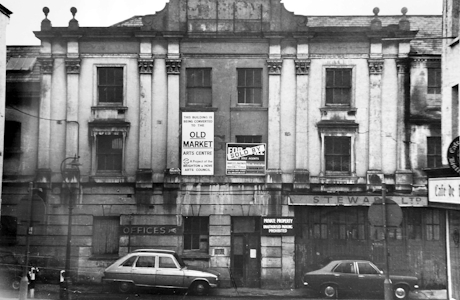
The Building in 1975. Keep reference: ACC 12253/7/1
This faltered in the 1980s and there were several plans to convert the building into flats. The building remained empty for thirteen years until it became the permanent home of the Hanover Band in 1996. The Old Market Trust was in continuous financial difficulty for much of the period until they went into liquidation in 2010. The building did function as a performing arts centre throughout this time. In 2010 it was purchased by Luke Cresswell and Steve McNicholas, founders of STOMP, for £800,000, and re-opened the following year as TOM (The Old Market). It is once again a thriving, independent arts hub, much beloved by local people. A great innovation in recent years has been the beautifully kept community garden to the east of the main building close to the Waterloo Street archway entrance.
The fortunes of the Old Market building in many ways reflects the fortunes of the area in which it is located. The optimism of the new development in the 1820s and 1830s gave way to a decline and then a re-birth. The success of Dupont’s Riding Academy in the second half of the century reflects the wealth and prosperity of Brighton and Hove at the same time. The building and the area faced decline and hard times in the second half of the twentieth century only to be rejuvenated and reborn in the past thirty years.
Research by Chris Nichols, April 2024
Return to Waterloo Street page.


